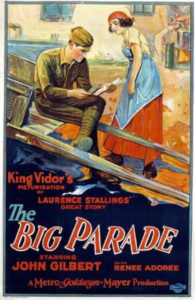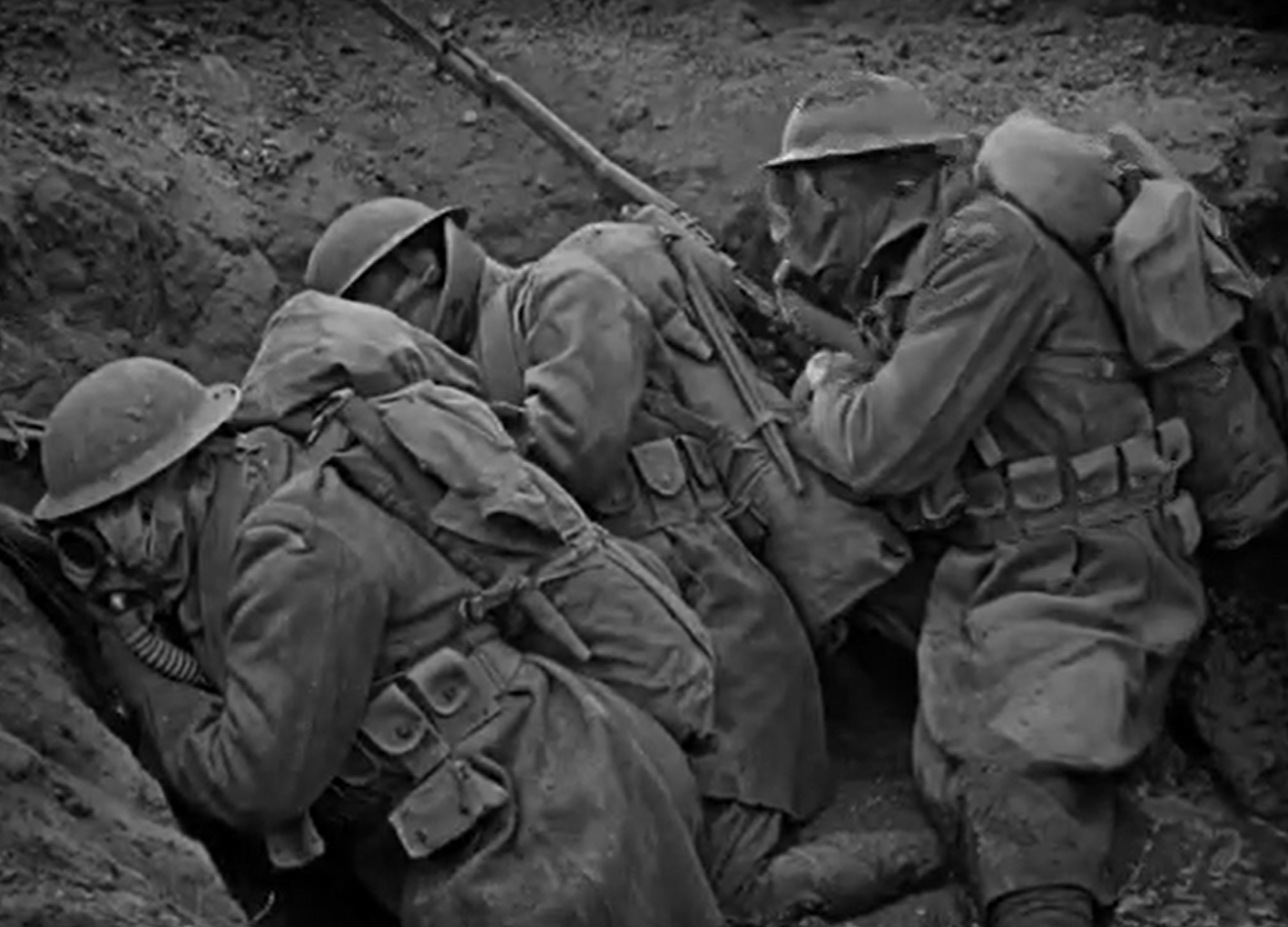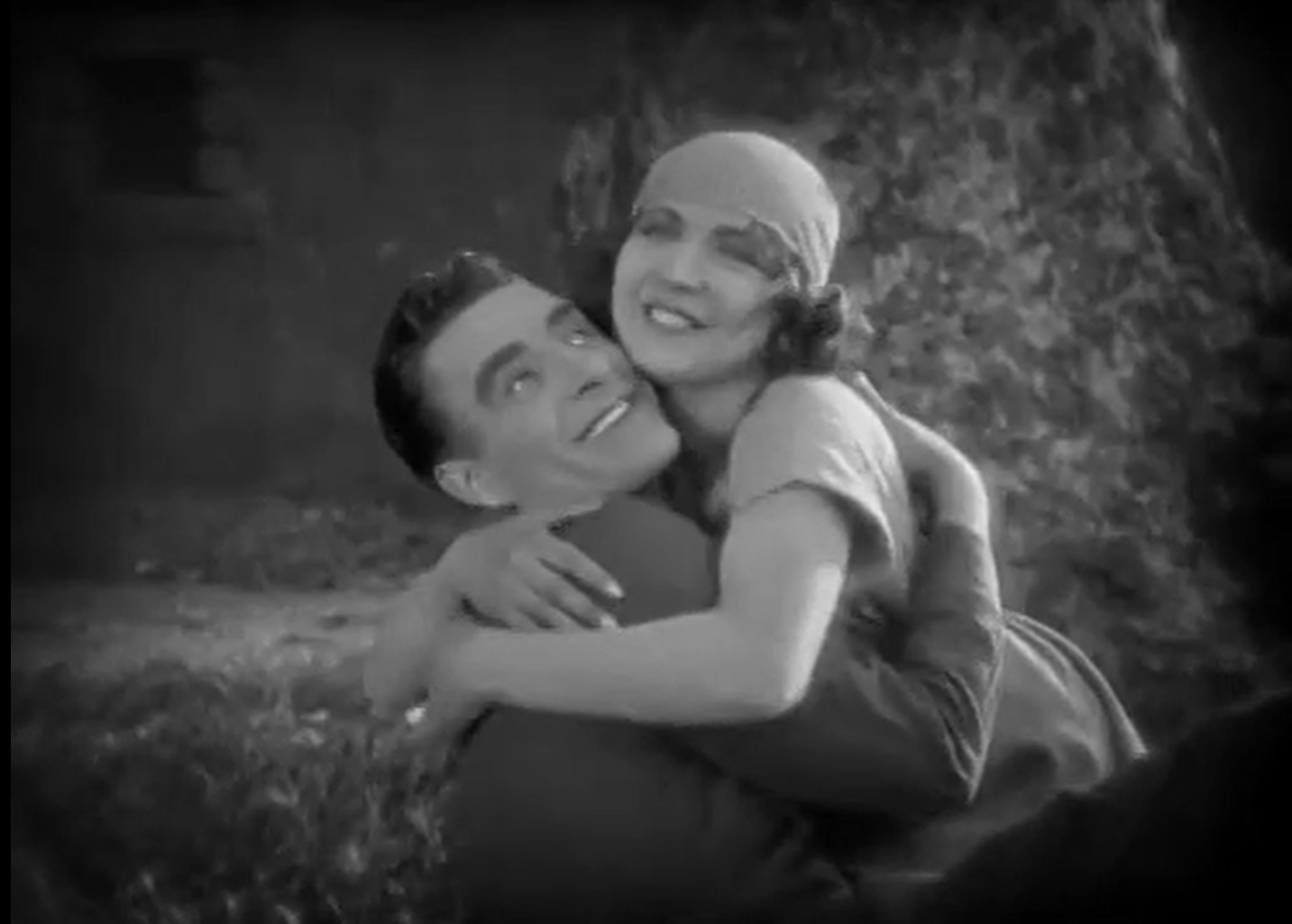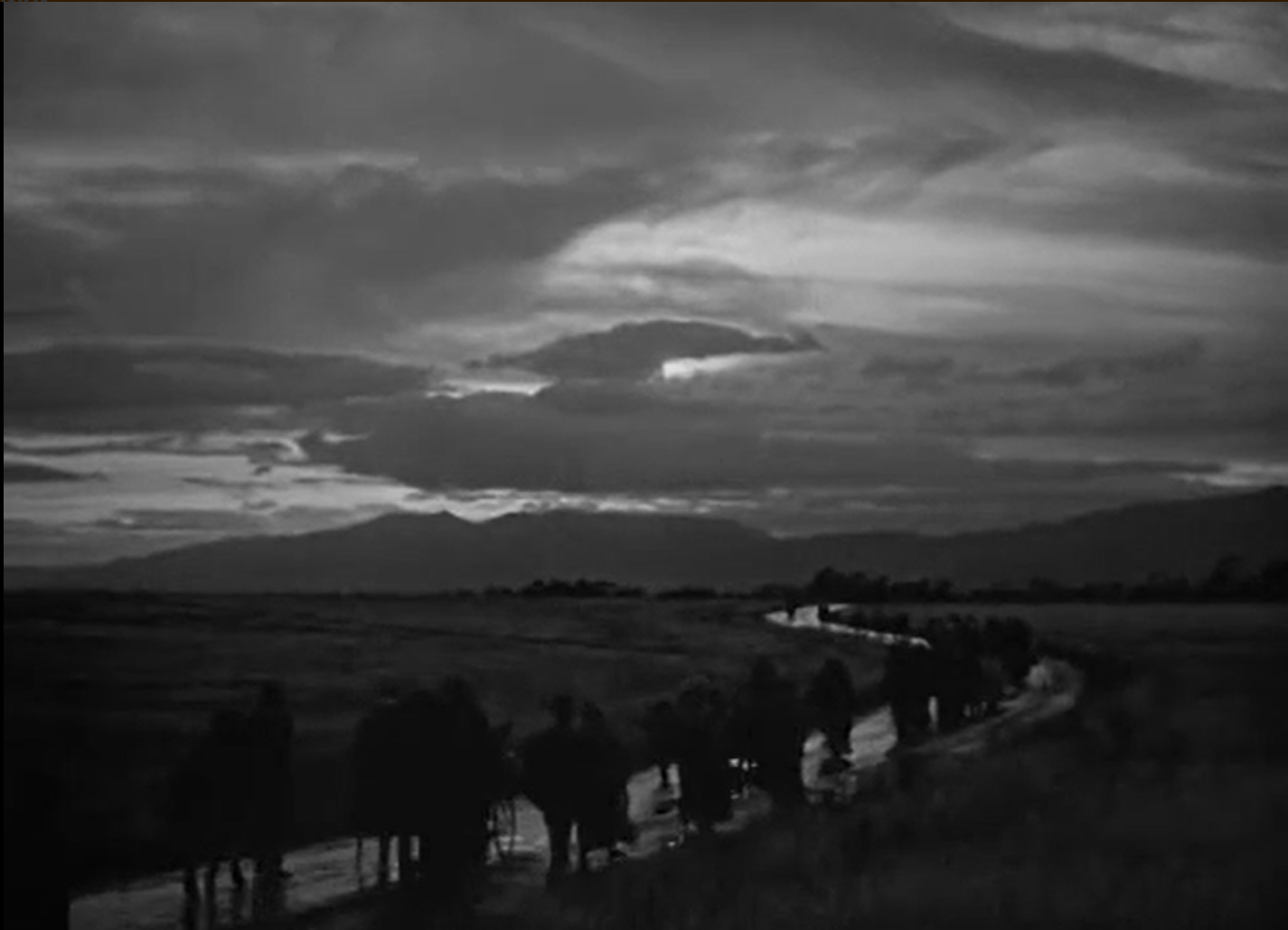Big Parade, The (1925)
“Waiting! Orders! Mud! Blood! Stinking stiffs! What the hell do we get out of this war anyway?”
|
Synopsis: |
|
Genres, Themes, Actors, and Directors:
Review: … many scenes are beautifully lit and composed: … and Vidor’s depiction of life for soldiers on the front was surely revelatory. Unfortunately, however, the story itself hasn’t aged all that well. An inordinate amount of time is taken up by a rather pedestrian subplot in which Gilbert falls in lust/love with a comely French milkmaid (Renee Adoree): … conveniently neglecting his fiancee, Claire Adams, back at home. By the time he and his two buddies (played simply as “types” by O’Brien and Kane; they never emerge as true individuals): … get to the trenches, more than half the movie is over — we only see them fighting in one hideous battle, and then they’re sent home, so there’s no sense of the endless scope of time spent by most soldiers on the front. Despite these complaints, however, film fanatics will surely want to check out this famous silent film at least once, and should definitely enjoy Vidor’s stunning imagery (see stills below). Redeeming Qualities and Moments:
Must See? Categories
(Listed in 1001 Movies You Must See Before You Die) Links: |










One thought on “Big Parade, The (1925)”
A must.
It’s unfortunate that I tend to approach silent films with apprehension, even though I do try to remain open to them. (At least I make the effort; think of the people who won’t watch any film prior to the era of color?) I hadn’t seen this before and, to my surprise, I feel it’s a silent film for people who really resist silent films.
It doesn’t start off that way. Indeed, the pre-war sequences (in which the three main characters are introduced in their civilian lives) are a bit pedestrian. When you see director Vidor at his best later in the film, you may realize how little he felt he had to work with in the earlier scenes (though he tries valiantly).
[Sidebar: It’s no surprise that Gilbert later chooses the French girl over his fiancee back home – esp. considering that the latter tells him she will be more in love with him than ever if she sees him wearing an army uniform! Ick! I mean, some of us do have our, uh, uniform fantasies but…ick!]
If you stay in there, the rest of the film more than rewards. One is pleasantly startled by Vidor’s use of framing/scope (often giving spaces striking atmosphere; he also uses every opportunity to fill the screen and it’s stunning). And the editing: note, in particular, the remarkable scene in which the soldiers leave the French town they camp in in order to go to the frontlines; the economy of imagery is like something we’d see done today.
[Fans of Vidor’s ‘The Fountainhead’ – yum! – will certainly see how his unique visual sense/style in that film can be witnessed so clearly in this much earlier work.]
The very lengthy war section is simply remarkable for its time. Powerful, emotional – esp. the scene in which Gilbert finds himself struggling with his hatred in a foxhole, as he lies next to a dying German soldier.
Of course, the film can’t help but be slightly dated, particularly in terms of its dialogue and such things as usage of old war songs.
Overall, though, this is a silent that speaks volumes!